Sea scurf – the geology of Ekofisk

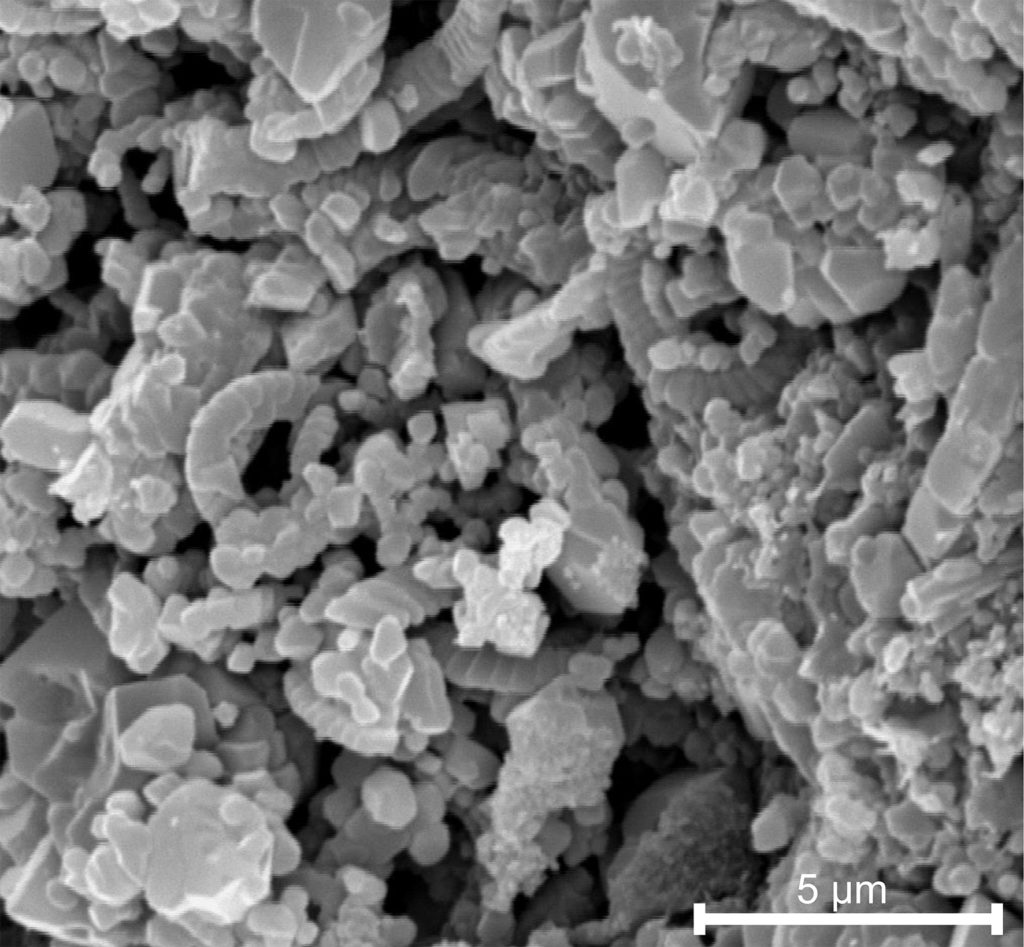 havets flass
havets flassKnown as coccoliths, these plates are so minute than 30 of them laid side by side would be no wider than a strand of hair. But what they lack in size, they make up for in numbers.
Their colossal accumulation is helped by the fact that coccolithophores reproduce asexually. When one dies, its coccoliths sinks to the seabed at a rate of about 15 centimetres per day.
If conditions are right, the scales remain lying and are eventually buried in their billions of billions.
Estimates indicate that coccolithophores globally produce more than 1.5 million tonnes of calcium carbonate per annum – equal to the weight of the Gullfaks C platform, which ranks as the heaviest structure ever moved by humans.
Three things must be in place for an oil and/or gas field to form – a source rock, a reservoir rock and a cap rock which prevents the petroleum from escaping.
In the case of Ekofisk, we know quite a bit about how these three components originated.
Source rock – Draupne
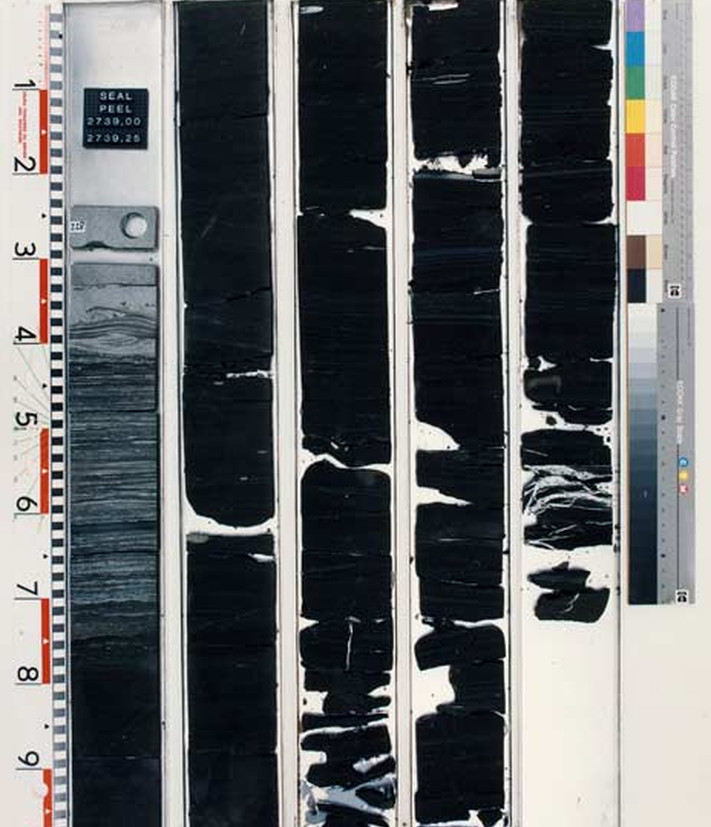 havets flass,
havets flass,The Ekofisk source rock dates from the Jurassic period, 161-145 million years ago, and comprises organically rich black shales known as the Draupne formation.
In Norse mythology, Draupne was the gold ring worn by the god Odin which formed another seven rings every ninth day – in other words, an endless source of prosperity.
So the name is appropriate for a formation found over most of the Norwegian continental shelf (NCS), which has put huge volumes of petroleum into most of Norway’s fields – including Ekofisk.
Cretaceous reservoir rock – Tor formation
The Cretaceous period followed the Jurassic and lasted for 145-66 million years, with the last 10 million of these forming the Campanian and Maastrichtian stages.
Conditions then were favourable for coccolithophores over much of the southern and central North Sea as well as England, Denmark and France.
Countless coccoliths were deposited on the seabed. Since the latter was neither flat nor stable, they were moved around by small slips, landslides and/or mud flows which could be activated by earthquakes, before being finally buried by their successors.
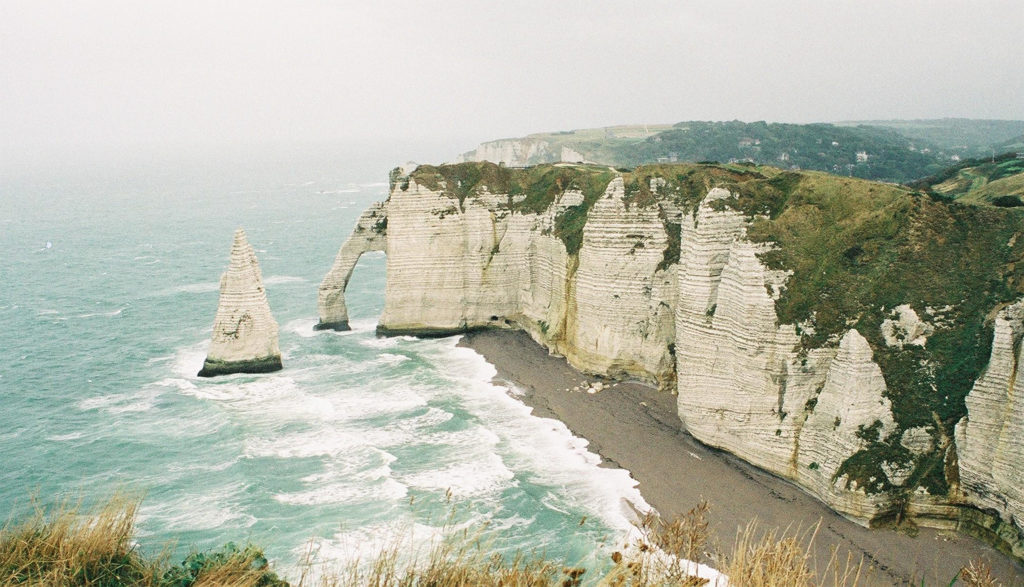 havets flass
havets flassAsteroid
The Cretaceous ended in a mass extinction event, when up to 70 per cent of all life on Earth vanished – including the dinosaurs.
This wipe-out was unleashed by a massive asteroid strike in what is now the Gulf of Mexico, where the Chicxulub crater is about 150 kilometres in diameter and 20 kilometres deep. The asteroid itself may have measured 80 kilometres.
 havets flass,
havets flass,Palaeocene reservoir rock – Ekofisk formation
That impact nevertheless failed to destroy all marine life, and the “sea scurf” continued to rain down in the following Palaeocene period.
During its first million years, known as the Danian stage, further tens of metres of calcium carbonate were deposited. But changed seabed conditions and a colder climate had an impact.
The amount of reworking which the material experienced varied and decreased, while the content of silica derived from microscopic diatoms and radiolarians increased.
Lower sea levels also meant an increased influx of sediments from land (terrigenous material) in the chalky plates heaping up on the seabed.
Porosity and permeability
These sediments usually have up to 50 per cent porosity (cavities) when deposited. But this will be considerably reduced by burial and diagenesis (the physical, chemical and biological changes which occur during conversion from sediment to stone).
In some case, that reduction can be down to well below 10 per cent. However, the good conditions around the Greater Ekofisk Area (GEA) meant that much of the porosity in the chalk was retained.
It has been calculated at 25-40 per cent. By comparison, a good sandstone reservoir – which is the kind usually found on the NCS – has a porosity of 30 per cent.
Permeability is also needed to get much oil out of a rock, and the “primary permeability” of Ekofisk chalk is low since the connections between its pores is poor/constricted.
But the field has enjoyed another stroke of luck here. A large number of fractures in the reservoir have improved its permeability and provide good production properties – at least initially. See water injection.
Cap rock and trap formation
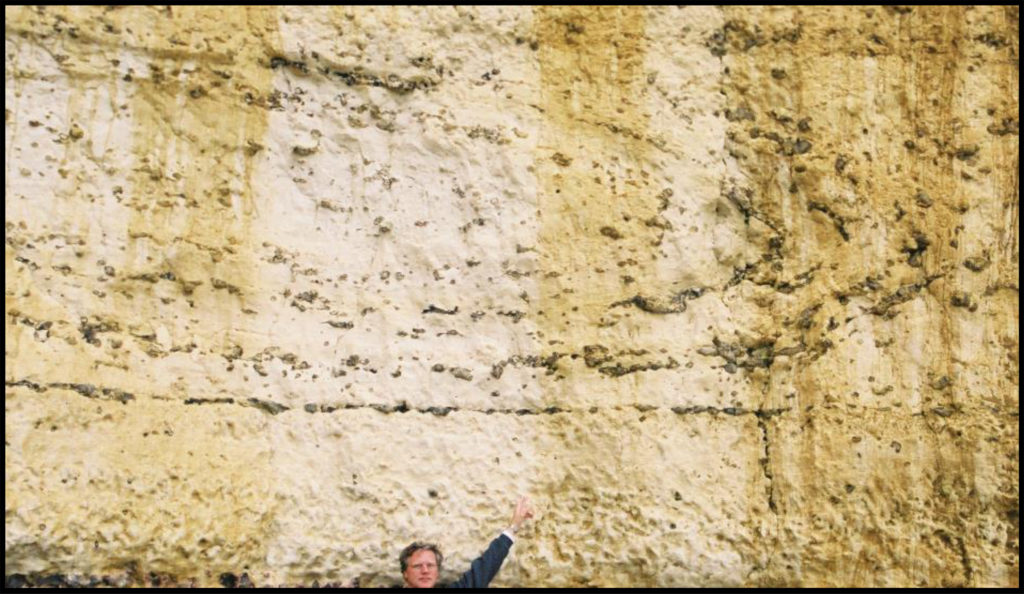 havets flass,
havets flass,After the deposition of the Ekofisk formation, conditions changed so that the overlying sediments lost all their porosity when buried and became tight (impermeable).
That allows them to function as a cap rock which seals the reservoir formed by the Tor and Ekofisk formations.
The fractures mentioned above were created at the same time as the rocks were subject to movement when large quantities of underlying salt shifted. This also produced large domes and thereby created trap structures where oil and gas can accumulate.
In other words, the oil migrating from the source rocks has gathered in the reservoir formations under the cap rock – and in amounts which can be difficult to imagine.
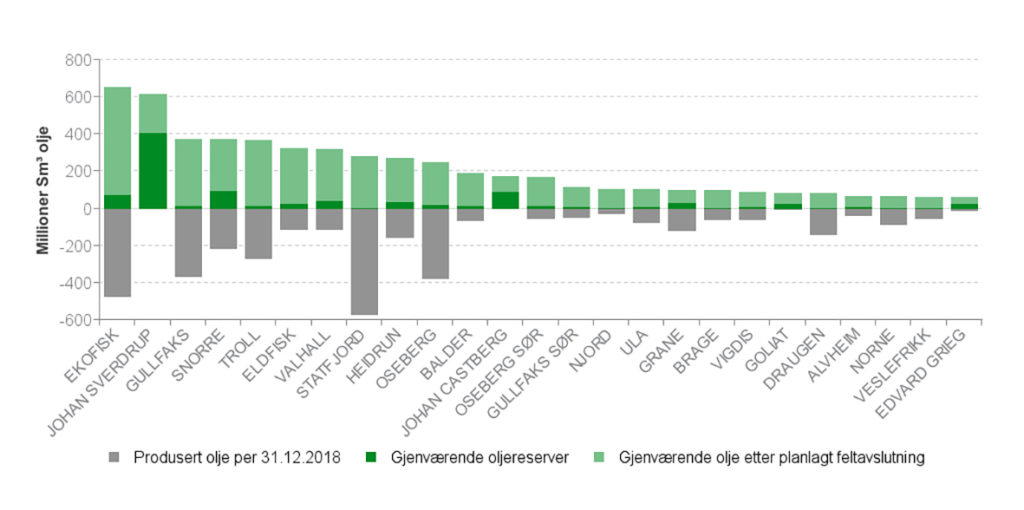 Havets flass – geologien i Ekofisk, Vanninnsprøyting for økt utvinning, graf
Havets flass – geologien i Ekofisk, Vanninnsprøyting for økt utvinning, grafThe Ekofisk reservoir is as thick as the Eiffel tower is tall and covers an area of 40 square kilometres – the same size as 5 500 football pitches.
Recoverable oil in Ekofisk totals 3.5 billion barrels, which would be sufficient to supply the whole world with crude for 35 days.
Roughly 1.1 billion standard cubic metres (scm) of oil (about 6.9 million barrels) and 300 billion scm of gas were present in Ekofisk when production began.
That corresponds to twice Norway’s annual water production. It also represents more than 100 times annual Norwegian energy consumption and just over 100 days of global oil usage.
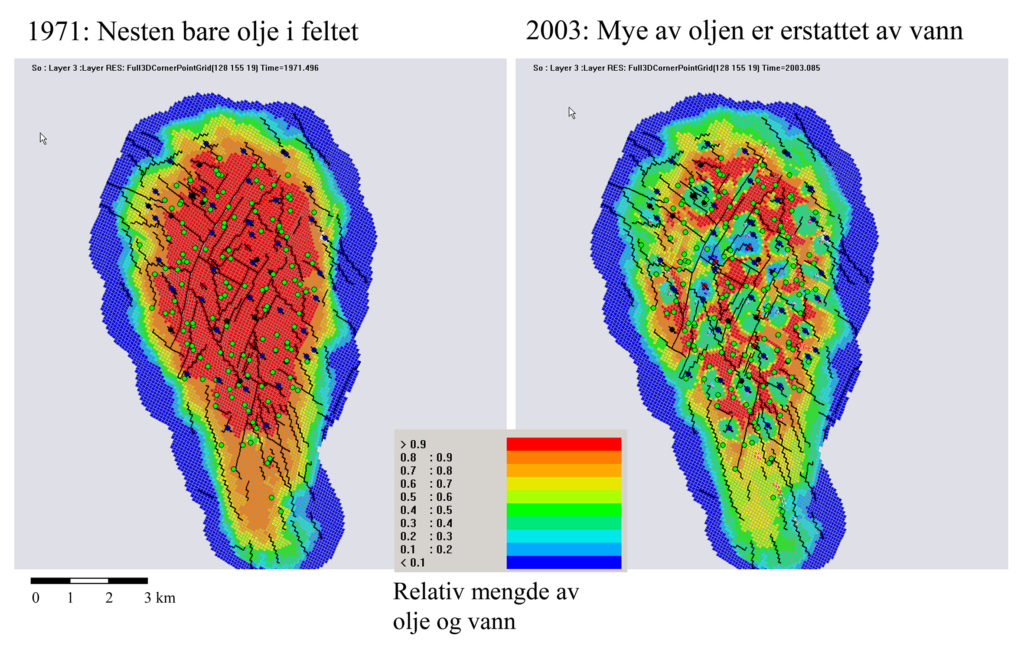 Havets flass,
Havets flass,It is impossible to get all the oil out of a reservoir, and a distinction is therefore drawn between reserves in place and recoverable reserves.
However it is measured, though, Ekofisk ranks as one of the very largest fields on the NCS. The original estimate for petroleum recovery from the field was 17 per cent. It is now expected to exceed 50 per cent – in part through waterflooding.
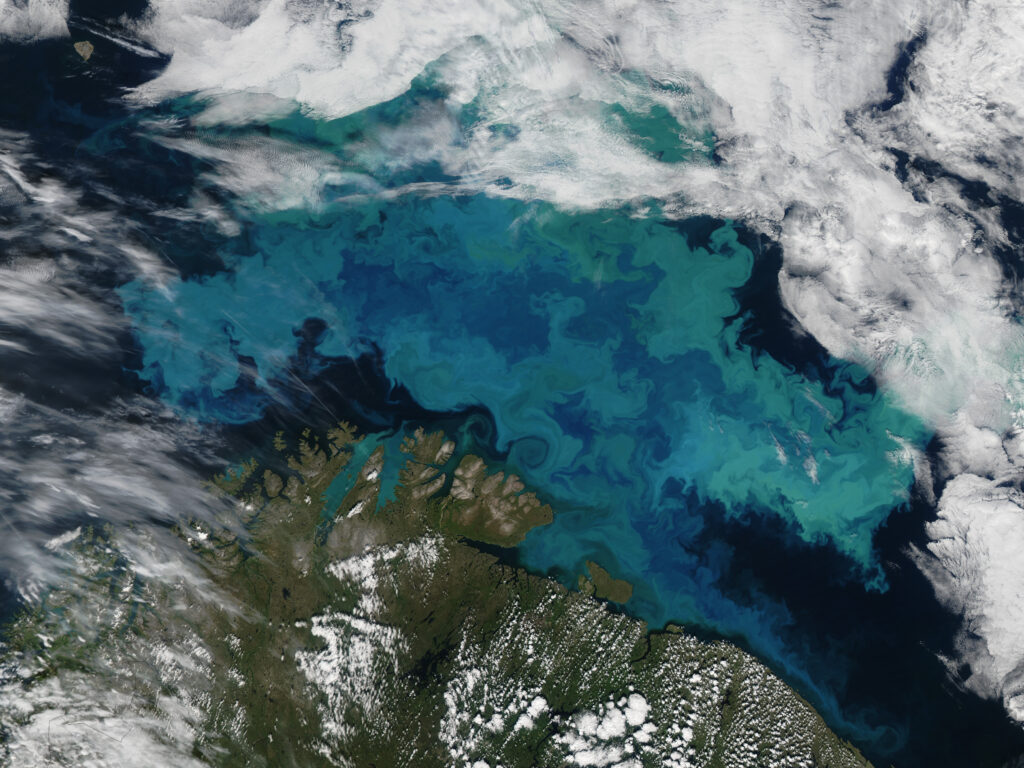
Further reading
Halbout, Michel T, Giant Oil and Gas Fields of the Decade: 1968–1978. AAPG Memoir 30, 1980.
Ivar B. Ramberg – Inge Bryhni – Arvid Nøttvedt – Kristin Rangnes (ed.’s), The Making of a Land, NGF 2008
